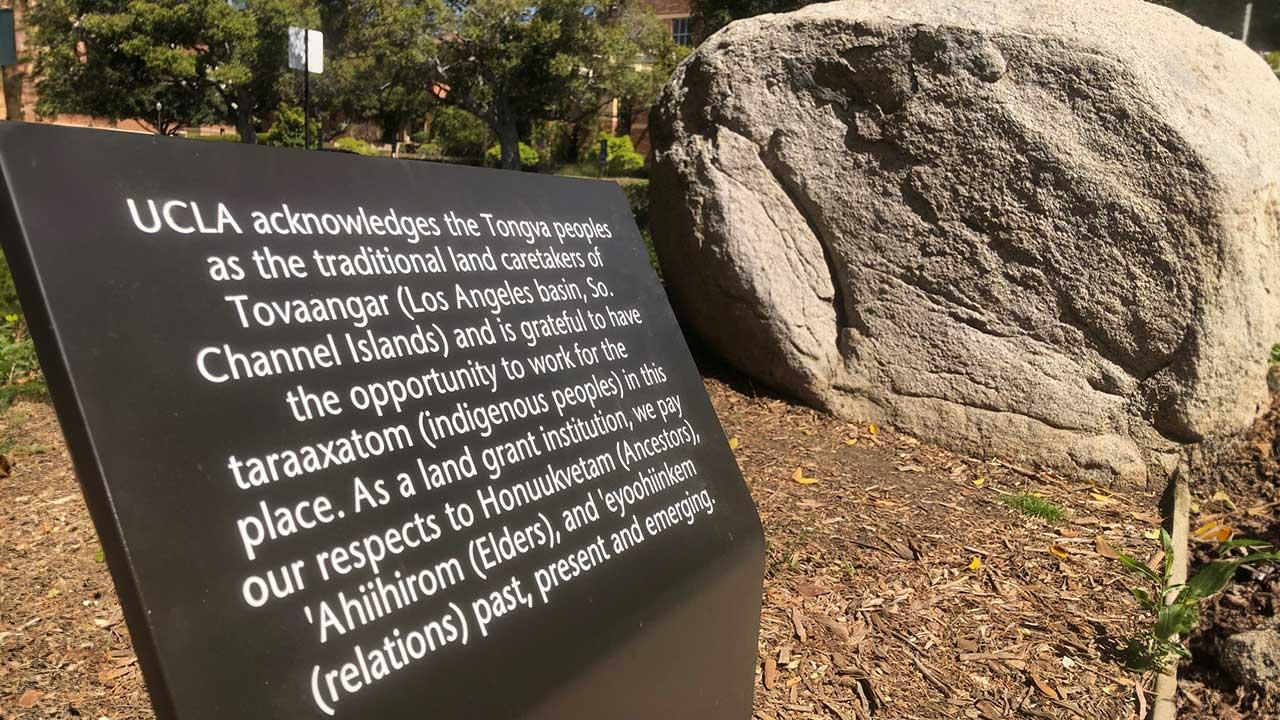You may have been to a UCLA event that opened with the campus’s land acknowledgment statement, which pays respect to the original caretakers of the land that UCLA currently occupies. Have you ever wondered why this is done and the significance of the words used?
UCLA is a public university historically acquired through various land grants in the 19th century, which dispossessed the Gabrielino/Tongva inhabitants. UCLA is in no way unique to this method of acquisition; not only is it consistent across the University of California, but also with several campuses and organizations across the United States.
The implementation of the UCLA land acknowledgment statement followed a trend throughout the country to make a shift toward recognizing difficult pasts in our nation. In addition to national trends, many faculty and student groups on campus called on the university to act in producing a land acknowledgment. In 2019, UCLA Chancellor Block announced the creation of the land acknowledgment for this campus. The committee involved in creating the statement made different options available to those seeking to use official language for a campus event, including an option that incorporates indigenous language.
It is worth mentioning that land acknowledgments can be viewed as controversial among not only non-native groups but also in the communities being recognized. Popular media outlets have published written articles calling the practice “moral exhibitionism” in an effort to make those involved in an organization rest easier without having to put in the effort to make substantial change. Dr. Shannon Speed, director of the UCLA American Indian Studies Center, shed some light on the issue, mentioning that while land acknowledgments are not substantive, they are symbolic, something that in many ways also holds value. It is important to view the land acknowledgment as a step in the right direction, not as a resolution at the end of a conflict.
Though the implementation of a land acknowledgment may feel minor and ineffective on an adequate scale, the symbolism holds value for such a large organization as UCLA reminding individuals about the origin of this beautiful campus. Indigenous topics often feel solely like historical events, but it is important to recognize that indigenous communities still very much live in the present. Land acknowledgments in many ways aim to bridge the gap between the past and present while paying respects to injustices of the past, serving as a reminder that there is action we can take in the present. Advocating for native causes and learning accurate indigenous history are great ways to act.
It can be easy to shy away from researching these topics independently because they either feel irrelevant to our daily lives or because it may seem we have already learned enough at other points in our past academic studies. However, advocating for the importance of enhancing individual knowledge of and continuously exploring indigenous topics can be a great way to ensure the history and present-day causes of indigenous communities stay a focus. Keeping a focus on native communities is something particularly important to an organization such as UCLA, a campus acquired through land grants.

